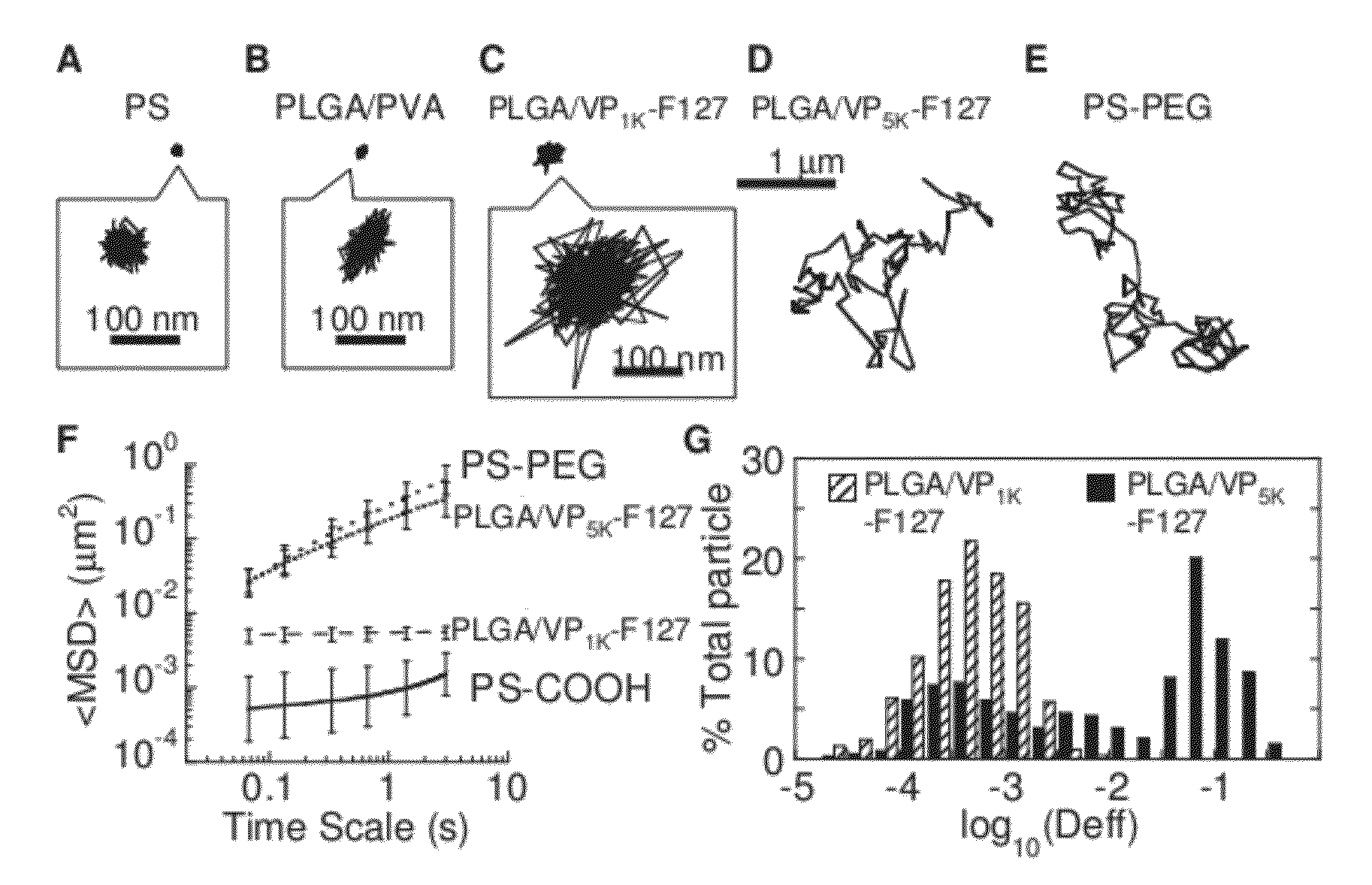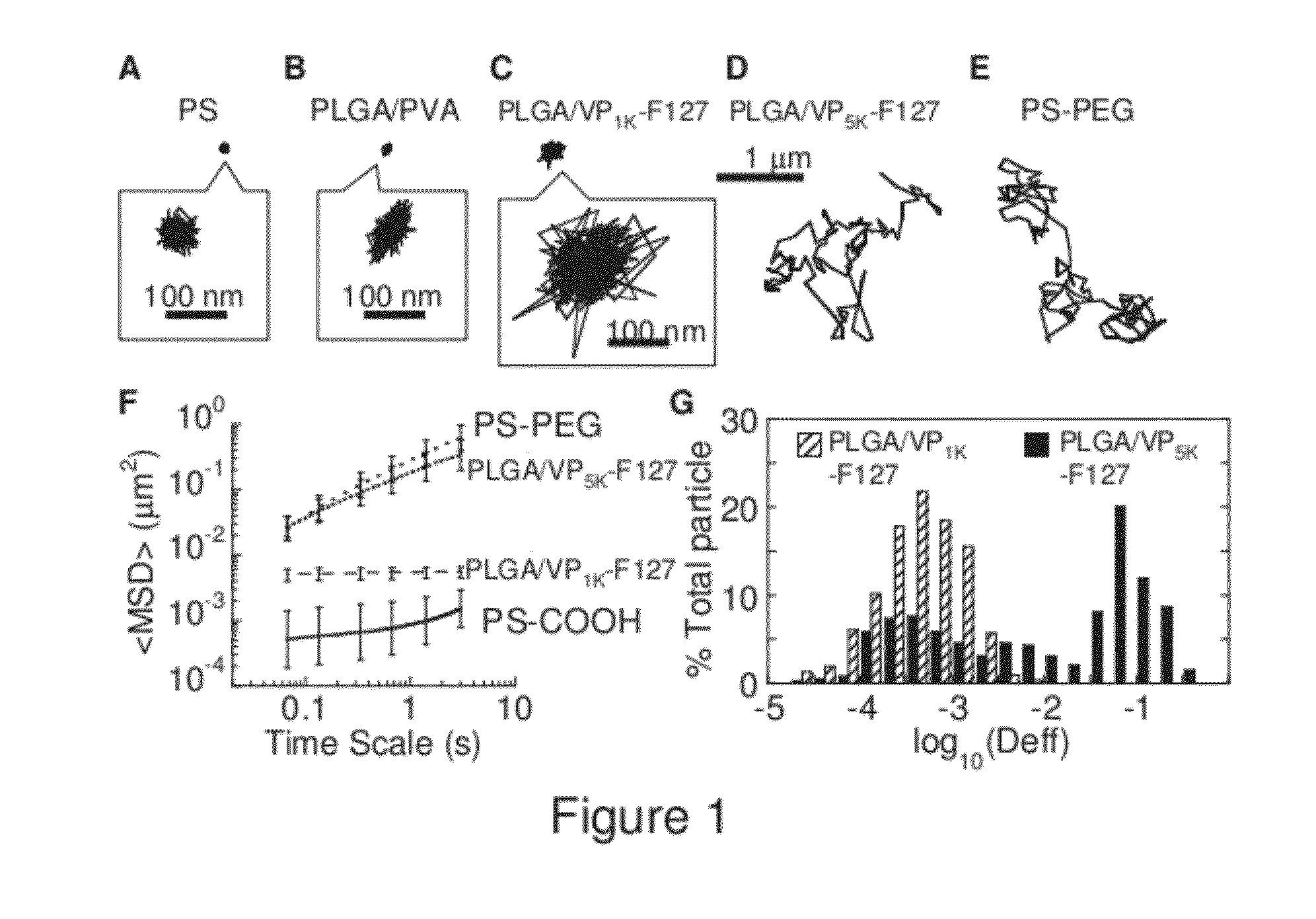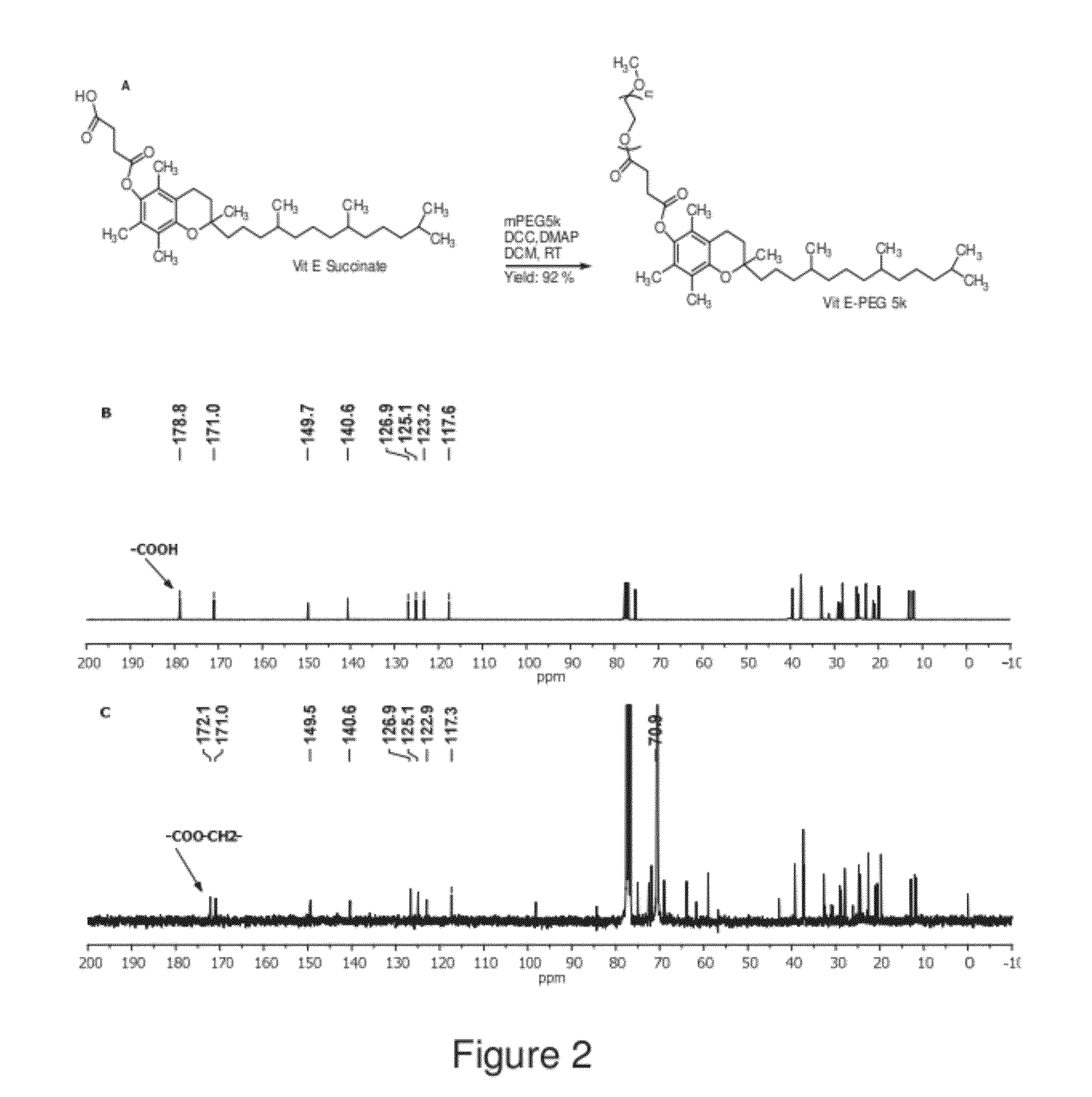Compositions and methods relating to reduced mucoadhesion
a composition and mucoadhesion technology, applied in the direction of powder delivery, granular delivery, packaged goods type, etc., can solve the problems of severe limitations in the use of gras in drug delivery applications at mucosal surfaces, no system composed entirely of gras (generally regarded as safe) components has been shown to be capable of penetrating human mucus, etc., to achieve the effect of reducing mucoadhesion, facilitating the movement of compositions, and reducing
- Summary
- Abstract
- Description
- Claims
- Application Information
AI Technical Summary
Benefits of technology
Problems solved by technology
Method used
Image
Examples
example 1
References for Example 1
[0137]1. Mu, L. and S. S. Feng, Vitamin E TPGS used as emulsifier in the solvent evaporation / extraction technique for fabrication of polymeric nanospheres for controlled release of paclitaxel (Taxol (R)). Journal of Controlled Release, 2002. 80(1-3): p. 129-144.[0138]2. Apgar, J., Y. Tseng, E. Fedorov, M. B. Herwig, S. C. Almo, and D. Wirtz, Multiple-particle tracking measurements of heterogeneities in solutions of actin filaments and actin bundles. Biophys J, 2000. 79(2): p. 1095-106.[0139]3. Suh, J., M. Dawson, and J. Hanes, Real-time multiple-particle tracking: applications to drug and gene delivery. Adv Drug Deliv Rev, 2005. 57(1): p. 63-78.[0140]4. Wang, Y. Y., S. K. Lai, J. S. Suk, A. Pace, R. Cone, and J. Hanes, Addressing the PEG mucoadhesivity paradox to engineer nanoparticles that “slip” through the human mucus barrier. Angew Chem Int Ed Engl, 2008. 47(50): p. 9726-9.[0141]5. Bhalla, K. N., Microtubule-targeted anticancer agents and apoptosis. Oncog...
example 2
References for Example 2
[0156]1. Lai, S. K., et al., Rapid transport of large polymeric nanoparticles in fresh undiluted human mucus. Proc Natl Acad Sci USA, 2007. 104(5): p. 1482-7.[0157]2. Wang, Y. Y., et al., Addressing the PEG mucoadhesivity paradox to engineer nanoparticles that “slip” through the human mucus barrier. Angew Chem Int Ed Engl, 2008. 47(50): p. 9726-9.[0158]3. Tang, B. C., et al., Biodegradable polymer nanoparticles that rapidly penetrate the human mucus barrier. Proc Natl Acad Sci USA, 2009. 106(46): p. 19268-73.[0159]4. Cu, Y. and W. M. Saltzman, Controlled surface modification with poly(ethylene)glycol enhances diffusion of PLGA nanoparticles in human cervical mucus. Mol Pharm, 2009. 6(1): p. 173-81.[0160]5. Emanuele, R. M., FLOCOR: a new anti-adhesive, rheologic agent. Expert Opin Investig Drugs, 1998. 7(7): p. 1193-200.[0161]6. Batrakova, E. V. and A. V. Kabanov, Pluronic block copolymers: evolution of drug delivery concept from inert nanocarriers to biologic...
example 3
Reference for Example 3
PUM
| Property | Measurement | Unit |
|---|---|---|
| molecular weight | aaaaa | aaaaa |
| molecular weight | aaaaa | aaaaa |
| molecular weight | aaaaa | aaaaa |
Abstract
Description
Claims
Application Information
 Login to View More
Login to View More - R&D
- Intellectual Property
- Life Sciences
- Materials
- Tech Scout
- Unparalleled Data Quality
- Higher Quality Content
- 60% Fewer Hallucinations
Browse by: Latest US Patents, China's latest patents, Technical Efficacy Thesaurus, Application Domain, Technology Topic, Popular Technical Reports.
© 2025 PatSnap. All rights reserved.Legal|Privacy policy|Modern Slavery Act Transparency Statement|Sitemap|About US| Contact US: help@patsnap.com



